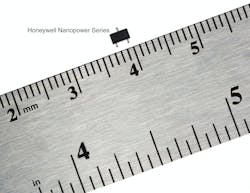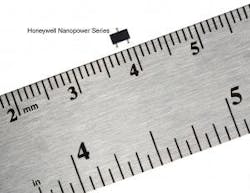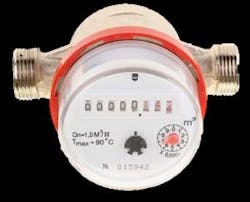Nanopower Magnetic Sensors Work Across Large Air Gaps
AMR magnetic field sensors work in part because they are made of a nickel-iron (Permalloy) thin film deposited on a silicon wafer and patterned as a resistive strip that changes its electrical resistance by 2% to 3% in the presence of a magnetic field. Reportedly, ARM sensors provide all the benefits of reed switches and Hall-effect sensors, without any of the downsides. Because a reed switch consists of a pair of contacts on ferrous metal reeds located in a sealed glass capsule, a drawback to the devices is that the glass capsule could break. What's more, because Hall-effect sensors act in the perpendicular plane, they are not nearly as sensitive as ARM sensors, which operate in the parallel plane. The high sensitivity of ARM sensors means they can work across large air gaps. Also, the push-pull CMOS output of ARMs eliminates the need for external resistors.
So how do designers make use of nanopower ARM sensors? A sensor might be mounted on a window frame opposite a magnet located on the window. The sensor detects data and wirelessly sends an alert to a security alarm system when the window is opened or closed.
In metering and flow-sensing devices such as water and gas utility meters, a magnetic sensor can be used to count pulses.The sensors also work well in industrial smoke detectors. Users can test whether the smoke detector is working by placing a magnet near it.
In applications like exercise equipment, a magnet is located in the emergency stop switch. The sensor detects when the user pulls the switch, which causes the machine to stop. The sensor can also count rpms to measure a user's speed on a treadmill as well as determine the incline position of the equipment.
Besides Honeywell, ARM sensors are available from Philips and HL-Planar Technik.
Watch a video about Honeywell's nano-powered anisotropic magnetoresistive (AMR) sensor IC



